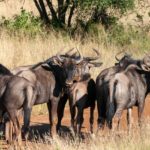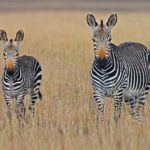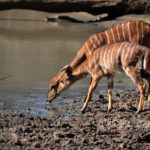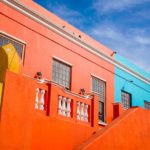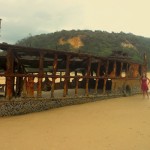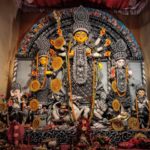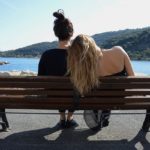A 23-Day Safari in Kruger National Park
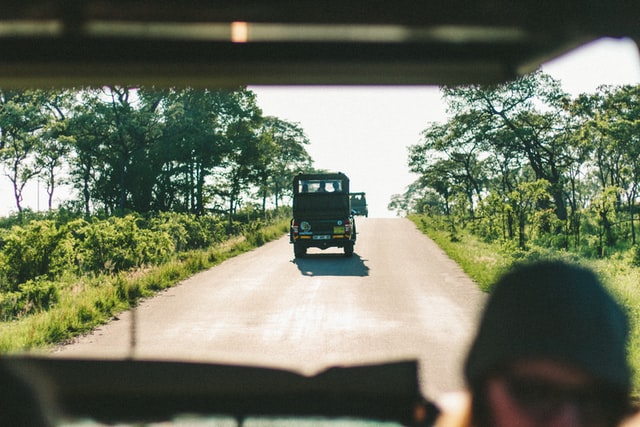
For 23 days, I lived in South Africa’s infamous Kruger National Park. I wasn’t there on an internship. I wasn’t doing volunteer work. I was just another tourist on safari.
We didn’t mean to be on safari that long, but Kruger sucked us into its parallel universe. A universe where animals are your neighbors and the bush is your backyard; where the call of the lion lulls you to sleep at night, the patrolling hyena acts as your campsite’s night security guard, and the chirp of birds serves as your morning alarm clock.
See, Kruger is one of the largest national parks in Africa. At almost 20,000km2, the park is about the size of Israel, and is much bigger than the nearby countries of Swaziland and Lesotho. Inside one can find everything, from gas stations and supermarkets to restaurants and museums. The campsites are equipped with filtered water, electricity, WIFI, laundry machines, and swimming pools. Basically, we lived inside Kruger National Park for 23 days because there was never any need to leave!
A universe where animals are your neighbors and the bush is your backyard; where the call of the lion lulls you to sleep at night, the patrolling hyena acts as your campsite’s night security guard, and the chirp of birds serves as your morning alarm clock.
Our days in Kruger quickly took on a natural rhythm. We woke with the break of dawn and took a quiet breakfast outside, facing out into the veld. Often, we’d watch a giraffe waltz past or a herd of elephants wander by as we crunched on our morning muesli. Then we’d be off, racing to our camper van for our own private safari.
For the first few hours, we’d drive along the roads and tracks of the park, scanning left and right for signs of movement. We’d observe zebras and antelope, herds of buffalos, hippos bobbing in rivers and pools. Once, we watched a mother baboon cradle a baby so young it was bright pink and furless.
Another time, we came face-to-face with young hyenas on the side of the road, mere meters from us. We watched them paw one another and curiously sniff our vehicle. They raced off into the bushes when another vehicle approached.
When the African sun began to beat down too heavily, the animals would become sedentary, seeking cover in the shade. We did the same.
The 23-Day Safari in Kruger National Park
We’d park our vehicle by a water hole or in front of an open savannah. We’d sit, wait, and watch. Since we had our home-on-wheels with us, we’d read books, drink coffee, have lunch, even take a nap. Almost always, these quiet afternoons led to intimate animal sightings.
In the early evening, when the animals re-emerged from their inactivity, we’d hit the road again for a sunset safari, almost as mesmerized by the dimming orange glow of the huge African sun as by the wild animals parading themselves in front of us. Then we’d head back to camp.
We’d stop at the reception to check the animal-sightings chart and see where different people had seen big game – like leopards and lions – and plan our next day’s safari accordingly. We’d shower, eat dinner, chat with a few human neighbors, listen to the sounds of non-human ones, and head to bed soon after the sun. The next day, we’d do it all again.
There was, of course, some variation on this theme. Some days, we’d stay in the campsite and catch up on emails and laundry. We’d sleep in, go for a swim, do a bit of exercise, visit a museum, fill up our fridge and our fuel tank.
Surrounded by new kinds of trees, differing degrees of humidity, and a different concentration of wildlife, we’d feel renewed and re-energized, ready to safari again.
Some days, we’d travel north. When we became accustomed to our current campsite or landscape, we’d drive up to the next region and set up at a new campsite. With 360km between Kruger’s northern and southern borders, the park encompasses a number of different vegetation zones. Surrounded by new kinds of trees, differing degrees of humidity, and a different concentration of wildlife, we’d feel renewed and re-energized, ready to safari again.
I remember one campsite was in the center of lion territory. On our first morning safari there, we spotted two sets of tiny ears poking out from tall brush. It was two lion cubs wrestling, with mama lion looking on. Another morning we spotted an adult female lion lying on a rock. We watched her for an hour. I was thankful that I had my home-on-wheels with me when, in the middle of this lion-gazing session, I was able to crawl into the back of our vehicle to use the toilet!
Another campsite we stayed in was located near a bird hide. We opted to spend one of our sunset safaris there instead. A long, narrow walkway led to a solid wooden cabin with eye-level openings that looked out onto a marsh. Sitting on the benches were a dozen people.
They all had some of the most impressive cameras I’ve ever seen. I was struck by how silent they were, how intensely they observed the landscape before them, how quietly excited they became by such tiny creatures.
Some carried binoculars, others bird encyclopedias. They all had some of the most impressive cameras I’ve ever seen. I was struck by how silent they were, how intensely they observed the landscape before them, how quietly excited they became by such tiny creatures. I learned to appreciate birds that evening.
Every campsite provided us with a different animal encounter, even though not all of them were positive. I’ll never forget the monkey run-in I had at one campsite. Vervet monkeys are to Africa as pigeons are to New York City. I’d seen them close-up loads of times before. I’d experienced their incredible food-stealing tactics firsthand. But never before had I seen such aggressive vervets!
Even armed with a heavy rock and a long stick, the monkeys weren’t dispelled by me. When I growled at them, they growled back and approached me further. They’d only run off if my husband came to protect me. I think they could smell my fear, or maybe my femininity. It was obvious that the vervets here had become so habituated to humans (probably from campers feeding them) that they no longer feared us.
Kruger National Park didn’t provide me with my best wildlife viewing experiences during my three years in Africa. The park is incredibly busy, so it’s difficult to get an animal sighting all to oneself.
Kruger National Park didn’t provide me with my best wildlife viewing experiences during my three years in Africa. The park is incredibly busy, so it’s difficult to get an animal sighting all to oneself. We had to share our lions and leopards with hoards of other vehicles, each inching in for a closer view.
When we’d drive down a busy road and see a jam of vehicles up ahead, we knew there was something big to see, and we’d wait in the line of vehicles to get a close-up view of whatever had been spotted. This took the chase out of the safari game and cheapened those animal sightings.
What Kruger did give me was a chance to commune with the African bush; not just to observe animals, get to know their habits, study the nuances between sub-species, and learn where and when to spot certain creatures, but to experience pristine landscapes. To live according to the rhythm of nature. To forget about the “real” world outside the park gates.
It was a strange feeling, then, the day we left Kruger National Park. I’d become used to the possibility of seeing a wild animal grazing on the side of the road. Now, instead, there were humans. Women were carrying sacks of wood or potatoes on their heads and babies on their backs. Schoolchildren were walking hand in hand. Men were riding bicycles.
A 23-Day Safari in Kruger National Park.
As we approached the first town, things became even stranger. The street sides were littered with garbage instead of grasses. Traffic thickened. The air was dusty. Honking horns and blaring music replaced the quiet symphony of birds we’d become accustomed to. Things I’d always thought of as normal were suddenly a massive shock to my senses, and I felt an overwhelming urge to rush back into the national park that had inadvertently become a refuge.
Yes, Kruger National Park gifted me something special over those 23 glorious days of safari: the chance to experience a different kind of normal, an alternate reality. Kruger helped me internalize that the world really is filled with endless possibilities, if only you allow yourself to live them.
The 23-Day Safari in Kruger National Park
Related Reading
- A South African Safari Without Borders
- Why South Africa is Perfect for Solo Travel
- 43 South African Slang Expressions You Need to Know
- Studying Abroad at the University of Cape Town
Have you traveled to South Africa? What were your impressions? Email us at editor@pinkpangea.com for information about sharing your experience and advice with the Pink Pangea community. We can’t wait to hear from you. Photo by Unsplash.

